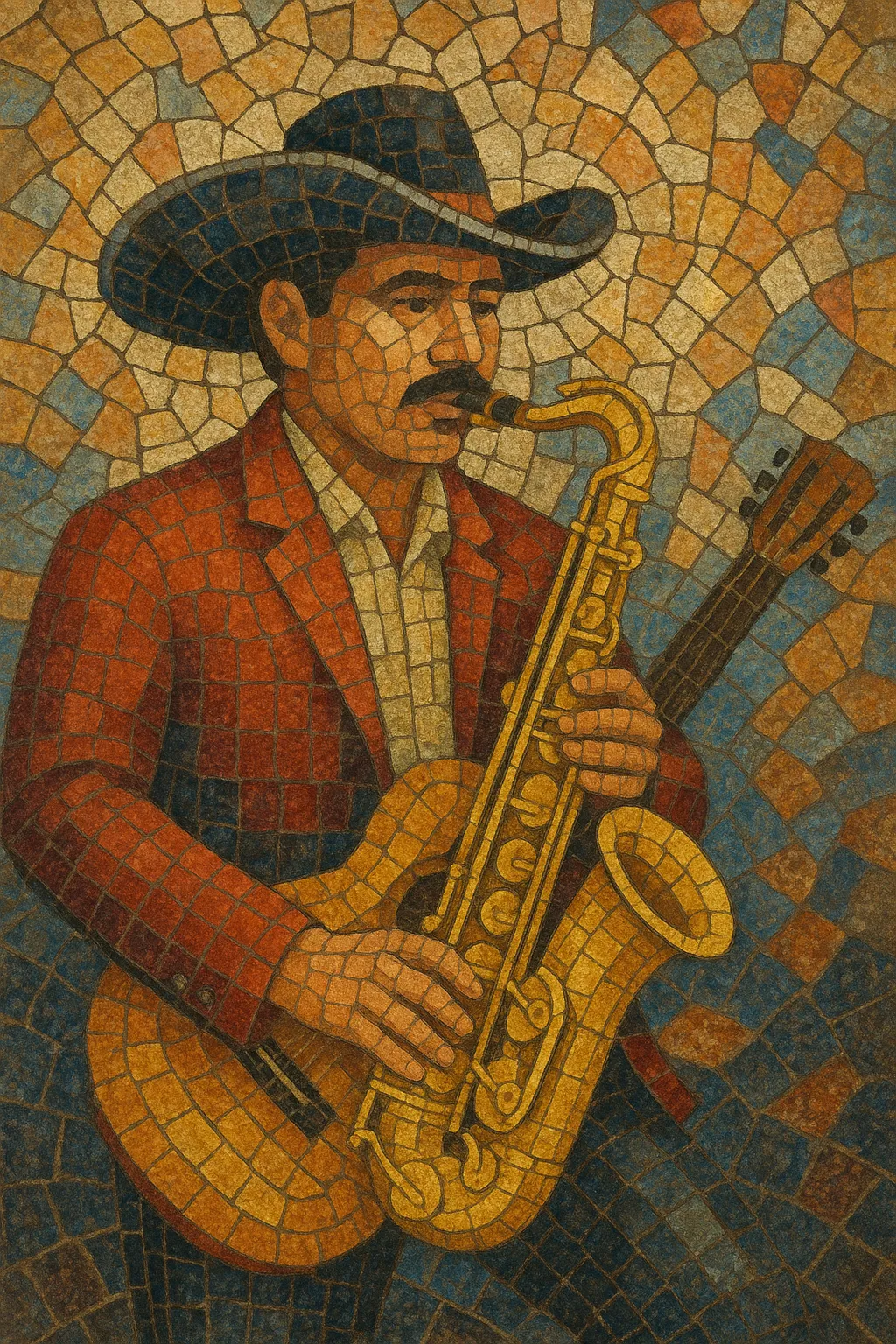Norteño-sax is a regional Mexican style that replaces or complements the accordion-centric norteño sound with a lead saxophone. The saxophone carries melodic hooks, countermelodies, and intros, while the traditional rhythm section—bajo sexto, electric bass, and drum kit—keeps the two-step polka, waltz, ranchera, and cumbia grooves associated with the northern borderlands.
The result is a bright, lyrical, and often romantic variant of norteño that thrives in dance halls and bailes. Songs commonly alternate between upbeat dance numbers and tender ballads, with lyrical themes of love, longing, everyday life, and migration across the U.S.–Mexico border. Because the saxophone cuts through the mix with a smooth yet piercing timbre, norteño-sax emphasizes singable melodies and memorable instrumental lines.
Norteño-sax emerged along the U.S.–Mexico border in the late 1970s as musicians steeped in norteño and Tejano/Tex-Mex experimented with replacing or pairing the accordion with a saxophone. Early exponents drew on polkas, waltzes, rancheras, and corridos, but used the sax for lead melodies and fills, giving the style a warmer, more romantic sheen.
Through the 1980s and 1990s, bands from Chihuahua, Coahuila, Nuevo León, and Texas popularized the sound in bailes and on regional radio. Romantic ballads and smooth sax solos aligned the style with the contemporaneous grupera movement while retaining norteño’s danceable rhythmic backbone. Groups such as Conjunto Primavera and Los Rieleros del Norte helped cement norteño-sax as a staple of Regional Mexicano programming across Mexico and Mexican-American communities in the United States.
In the 2000s, a new wave of bands modernized arrangements, tightened rhythm sections, and featured more prominent saxophone writing, broadening the repertoire to include cumbias and polished radio ballads without losing the polka- and waltz-driven core.
The 2010s saw norteño-sax flourish on streaming platforms and regional charts, especially in the Southwest U.S. and Northern Mexico. Younger ensembles introduced denser horn voicings, contemporary production, and live-show energy, while maintaining traditional forms. The style also influenced other Regional Mexicano substyles—particularly cumbia norteña mexicana and modern corrido aesthetics—by normalizing sax-led hooks within borderland dance music.


